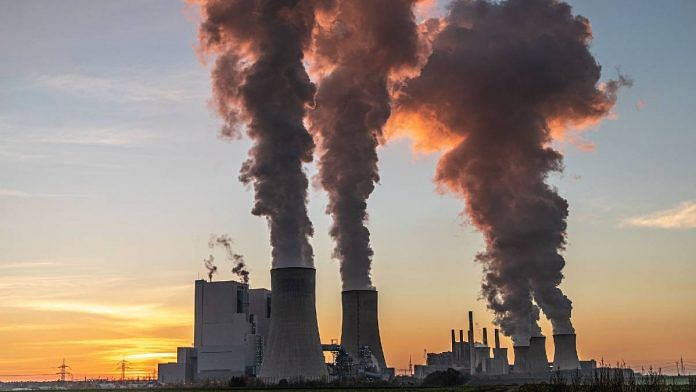New Delhi: Global commitments to reduce greenhouse gas emissions are a “testimony to inadequate action”, failing to adequately address the rising temperatures responsible for climate change, a new UN report has said. The only way forward is “system-wide transformation”, to address the sources of greenhouse gas emissions.
The Emissions Gap report released by the United Nations Environment Programme (UNEP) Thursday revealed the gap in the reduction of emissions, required to halt global warming at 1.5 degrees above pre-industrial levels, is 23 gigatonnes of carbon dioxide or its equivalent. Emissions are projected to reach 58 gigatonnes by 2030, and current pledges — if fully implemented — will result in a reduction of three to six gigatonnes, added the report.
In 2015, countries from across the world had made an international treaty on climate change, known as the Paris Agreement, which agreed to limit global warming to “well below” 2 degrees Celsius by the end of the century, to avoid climate catastrophe. According to the latest available scientific evidence, global warming is already at 1.1 degrees above pre-industrial levels.
According to the Emissions Gap report, the complete implementation of climate pledges put the world on track to restrict global warming to least 2.4 degrees above pre-industrial limits, making them “highly insufficient”, to tackle climate change.
If no additional action is taken, global warming will reach 2.8 degrees above pre-industrial limits by the end of the century, the report warned.
“Incremental change is no longer an option: broad-based economy-wide transformations are required to avoid closing the window of opportunity to limit global warming to well below 2°C, preferably 1.5°C. Every fraction of a degree matters,” the report stated.
The report reiterated the findings of another UN analysis released Wednesday, which examined the climate goals (called Nationally Determined Contributions) made by parties under the Paris Agreement. Called the “NDC synthesis” report, it said current pledges were “nowhere near the scale and pace of emission reductions required” to control global warming, even though progress had been made.
Reducing emissions will be discussed at length at the COP27, the annual international climate summit, scheduled to be held in Sharm el-Sheikh in Egypt next month.
Also read: UN report has grim warning on global warming: Latest pledges ‘nowhere near’ meeting targets
Gap in commitments
NDCs are both unconditional and conditional — those dependent upon international finance and technology transfer. If all unconditional NDCs are achieved, there is a 66 per cent likelihood that temperatures will reach 2.6 degrees by the end of the century, the report says.
In order to meet the requirements of the Paris Agreement, emissions need to reduce by “unprecedented levels”, over the next eight years to close the emissions gap, said the UNEP report.
“Current commitments by countries, as expressed in their unconditional and conditional NDCs for 2030, are estimated to reduce global emissions by 5 and 10 per cent, respectively, compared with current policies, and assuming that they are fully implemented,” said the report, adding that in order to limit global warming to below 2 and 1.5 degrees, emissions need to be reduced by 30 and 45 per cent respectively.
Though India is among the top seven emitters of greenhouse gases, accounting for 55 per cent of global emissions, its per capita emissions are extremely low — at just 2.3 tonnes, according to the report. Average global emissions are 6.3 tonnes.
Reducing emissions
To reduce the emissions gap, the report said high emitting sectors need to be radically transformed. The share of renewable, zero-emissions power generation should be accelerated while unabated coal and gas generation should be phased out, said the report. Abatement refers to the use of carbon removal technologies.
Other measures recommended by the UNEP report to reduce emissions include sustaining deep reductions in emissions, initiating net-zero technology innovations, shifting to low-emission forms of transport, and electrifying industry, among others.
(Edited by Poulomi Banerjee)
Also read: India’s fossil fuel imports, bills to double over next two decades, reveals new IEA report






